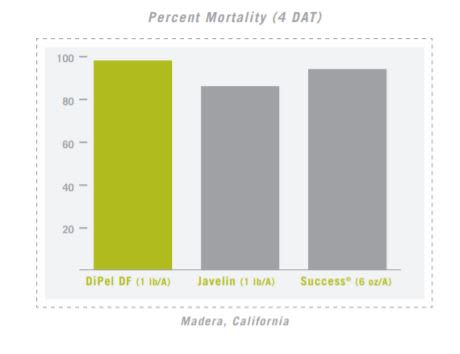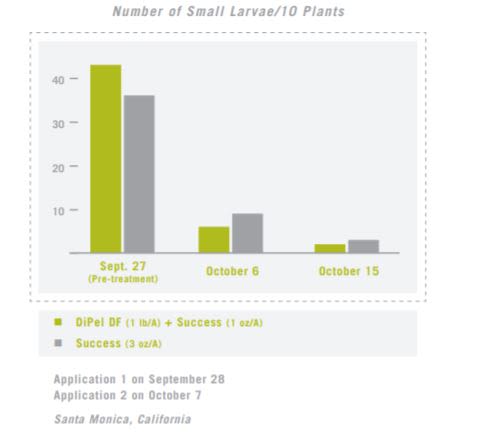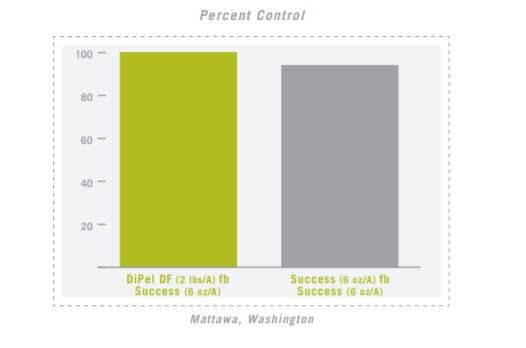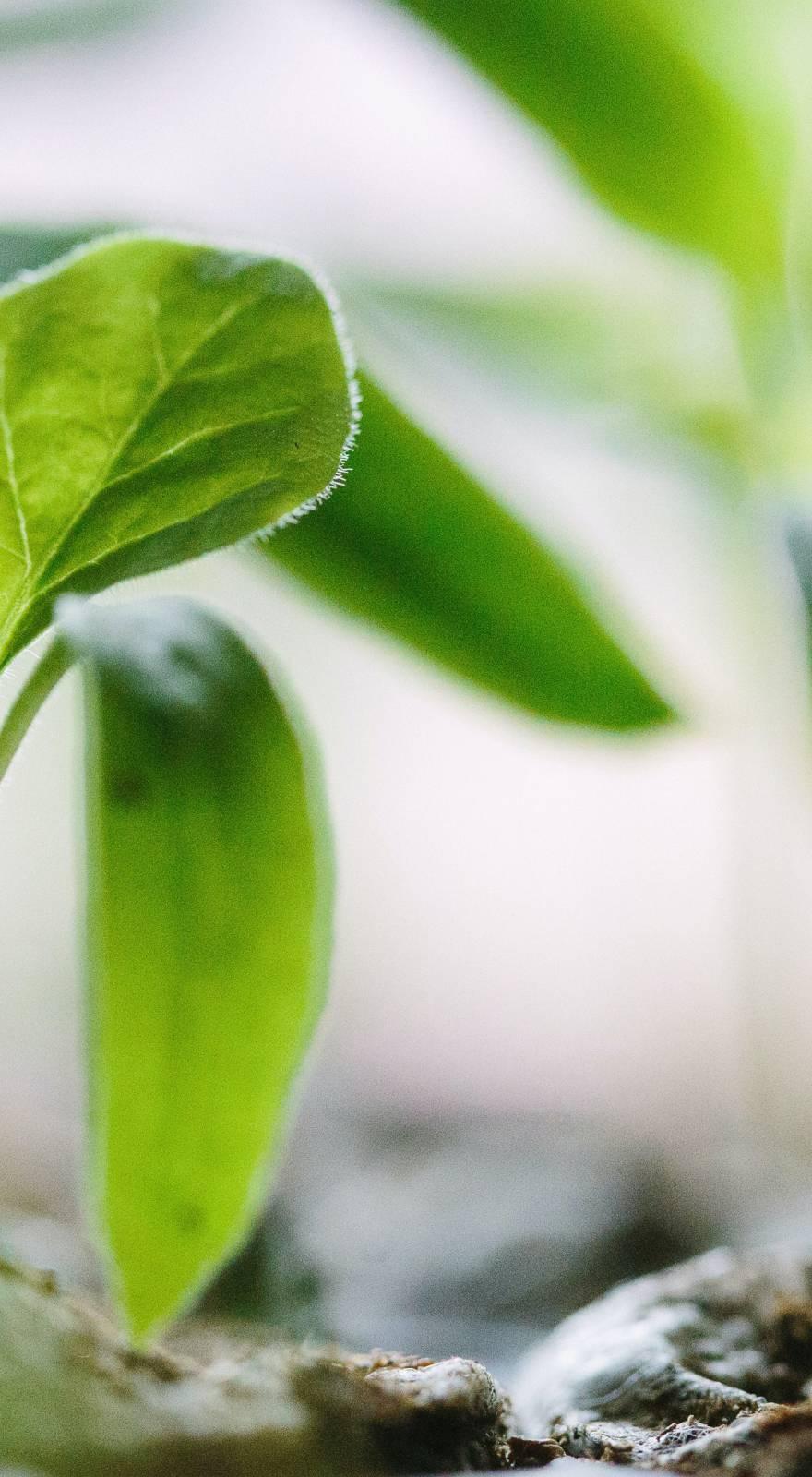Knowde Enhanced TDS
Identification & Functionality
- IRAC Code
- Agrochemical Functions
- Technologies
- Product Families
Features & Benefits
- Labeling Claims
- Agrochemicals Features
- Product Info
The active ingredient in DiPel consists of an optimized blend of four potent Bt protein toxins and a spore. Many other Bt strains lack the volume and balance of Bt toxin proteins that DiPel delivers. Bt subsp. kurstaki toxins have distinct modes of action unlike any chemical insecticide, providing a perfect tool for insect pest control programs which employ tank mix or rotation for insecticide resistance management. DiPel has never shown cross-resistance with any chemical insecticide. DiPel biological insecticide is non-toxic to pollinators and other beneficial insects.
- Multiple Benefits of DiPel
- Consistent Performance : The value of DiPel begins with effective and consistent in-field performance. DiPel is produced with exacting quality control based on pharmaceutical grade standards. Every lot of DiPel is tested multiple times during manufacturing to make sure it meets the performance standards growers expect in the field.
- Low Impact on Workers and the Environment : With its highly specific activity and natural origin, DiPel does not harm important beneficial insects such as bees for pollination, insect predators, and parasites used in control of other insect pests. DiPel is also not harmful to humans, wildlife or the environment, providing growers with much-needed flexibility
- Every lot of DiPel is tested on over 2000 lepidopteran larvae at various stages in manufacturing.
- Resistance Management : The multiple modes of action present in DiPel have made it the premier insect resistance management tool for more than 40 years.
- Benefits
- Overall value - better performance of your insecticide program at the same or less cost
- Flexibility - shortest worker re-entry and pre-harvest intervals (PHIs) allowed by law
- Preservation of beneficial insects -no flaring of secondary pests Marketing confidence - no residue issues when you apply DiPel
Applications & Uses
- Markets
- Applications
- Insecticide Target Species
- Using DiPel in a Program with Other Insecticides
The flexibility of DiPel and the unique set of benefits it brings at different points in the crop production cycle make it an ideal partner in an integrated program for control of lepidopteran pests. A few widely used examples:
DiPel for use with XenTari®
DiPel is often used as a rotation partner with XenTari, another Bt product from Valent BioSciences. XenTari is based on different subspecies of Bt, Bt aizawai (Bta), which has been proven to be exceptionally effective against key pests such as armyworms and diamondback moth.DiPel for use with Synthetic Pyrethroids
Given their complementary modes of action, DiPel and synthetic pyrethroid insecticides work well together. DiPel disrupts caterpillar gut functions thereby reducing detoxification of ingested chemical insecticides, while pyrethroids target the pests’ nervous system. Pyrethroids give broad spectrum insect control to larvae and adults of many insect species and are highly prone to resistance. DiPel is more specific in its spectrum of insect toxicity against caterpillars.DiPel for use with IRAC Class 28 Products
The Insecticide Resistance Action Committee (IRAC) Class 28 products, which include the diamide chemistries, are among the most commonly used group of conventional insecticides. DiPel is a mainstay in a resistance management program to keep Class 28 products effective. Just a few years since their introduction, resistance problems with Class 28 products have appeared in cabbages and tomatoes in Thailand, Philippines, Malaysia, and Brazil. It is common for growers to use DiPel in a program with Class 28 products, as DiPel biological insecticide has never shown cross resistance to any chemical insecticide given its unique, multiple modes of action.- DiPel® and pH of solution
- Maintain the pH of your mixing solutions between 4.5 and 8.
- Check the pH of your spray tank water before mixing.
- When mixing DiPel® with other agricultural products, ensure that the pH remains between 4.5 and 8.
- If the pH of the tank-mix is out of this range, a buffer agent may be used.
- Tank-mixes with high pH may result in some loss of biological activity.
- Spray DiPel® tank-mix within 24 hours of preparation.
- Compatibility
- DiPel® is generally compatible with most agricultural products.
- Perform a jar test to ensure physical compatibility of DiPel® with other pesticide formulations.
- Use a clear glass jar with lid. Add water, pesticides, and adjuvants in correct proportions and order of addition.
- Invert the jar several times to ensure proper mixing.
- After 15 to 30 minutes, observe mixture for any incompatibility such as sludge, balling-up, gelling.
- The tank-mixture should be easily dispersible.
- This test will not detect chemical or phytotoxic incompatibility.
- General mixing Directions
If using a tank with automated mixing/agitation capabilities:
• Add ½ to ¾ required volume of water and start agitation.
• Slowly add recommended amount of DiPel® either as a slurry or directly from the container.
• Add other pesticide products.*
• Add the rest of the required water and agitate until the contents are fully mixed, approximately 10-15 minutes depending upon
spray partners, type of agitation, etc.
• Maintain agitation while spraying.
• For best results, prepare only enough DiPel® mix that can be sprayed in 1 day.
If mixing by hand:
• Fill container with ½ to ¾ volume of required water.
• Add desired amount of DiPel®.
• Mix for 5 minutes or until a homogeneous suspension is obtained.
• Add other spray materials as required.*
• Add the remainder of the water, mix for another 5 minutes.
• Continue occasional agitation while spraying to maintain a homogeneous suspension.
• For best results, prepare only enough DiPel® mix that can be sprayed within one day.- Uses
- Early Season : Start with DiPel. Add it to a tank-mix to improve insect control. 0r use as an economical alternative to other soft insecticides to preserve beneficials and to avoid flaring secondary pests
- Mid-Season : Maximize during the middle. Use DiPel mid season to improve pertormance and reduce the risk of resistance due to DIPel's multiple modes of action
- Late Season : Finish with flexibility. Use DiPel late season and enjoy the shortest re-entry and pre harvest intervals allowed by law. Then market with confidence, knowing you won't face residue issues with DiPeluse
- Better Formulation Options
Valent BioSciences, the maker of DiPel, realizes that one formulation doesn't fit every crop and production situation. That's why DiPel features the broadest range of formulation options of any Bt brand. What's more, these formulations are designed for maximum shelf life, as well as better mixing and application.
Regulatory & Compliance
- Certifications & Compliance
- Certification
DiPel is OMRI® listed and USDA National Organic Program (NOP) certified.
Technical Details & Test Data
- Stand Alone Control

- Improving Performance in a Tank

- Improving Performance in Rotation


